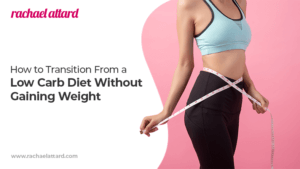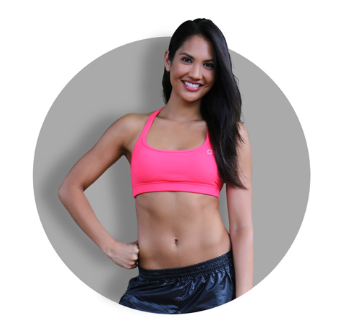Comparing Low-Carb Diets – Which One Is the Best?

I receive lots of questions about low-carb diets and the benefits they offer. There are a lot of different low-carb options out there, and I’m excited to summarise four of the most popular for you.
In this article, I’ll explain what the Keto, Atkins, Paleo, and low-carb Mediterranean diets are like so that you understand which will work best for you. :)
What Is a Low-Carb Diet?
Low-carb diets emphasise eating protein and fat while eating fewer carbs than the average person. People who are on low-carb diets tend to eat things like eggs, nuts, seeds, meat, and fish.
They typically eat less pasta, bread, and other grains. They also don’t eat many sugary sweets or desserts, and some people limit certain types of fruits and vegetables.
Most of the time, people turn to low-carb diets to help them lose weight. Some believe low-carb diets help people lose weight faster than other diets do. However, in the long run, other diets typically work just as well as low-carb diets do.
You might also try a low-carb diet for reasons that don’t have to do with weight loss. For example, people with high blood pressure, high blood sugar, or type 2 diabetes sometimes go on low-carb diets to manage their health problems. Low-carb diets can help increase good (HDL) cholesterol and reduce bad (LDL) cholesterol.
Different Low Carb Diets
The Keto Diet
On keto, you reduce your carb intake significantly and replace it with fat. The goal of this diet is to keep your carb intake so low that your body goes into a state called ketosis. Too much protein can also limit ketosis, which is why the emphasis is on replacing carbs with mostly fat.
Typically, your body relies on carbohydrates as a source of energy. However, during ketosis, your body uses fat storage as energy instead.
When your insulin drops from a lack of carbs, your body starts releasing fatty acids from your stored fat. Some of the fatty acids go to your liver, which converts them into something called ketones, and these ketones supply energy to your brain. Over time, your body burns a lot of fat.
RELATED POST: Is the Keto Diet Good For You?
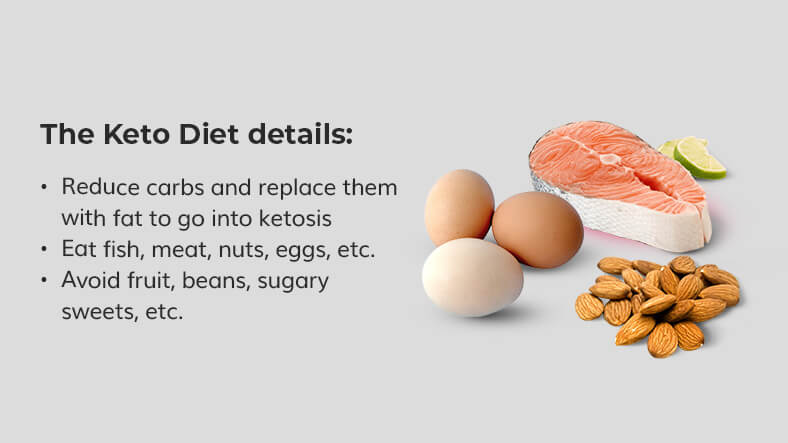
Foods to Eat on the Keto Diet
Eat foods that are high in fat. Then, prioritise protein and low-carb fruits and vegetables.
Some common foods to eat on keto include:
- Fish, including salmon, tuna, mackerel, and trout
- Cheese, especially unprocessed cheeses like mozzarella, cheddar, or blue cheese
- Meat
- Nuts and seeds
- Butters, cream, and other high-fat dairy products
- Eggs
- Oils, especially extra virgin olive oil, coconut oil, and avocado oil
- Avocados
- Low-carb vegetables, such as green vegetables, tomatoes, onions, and peppers
- Salt, pepper, herbs, and low-carb spices
Foods to Avoid on the Keto Diet
On keto, you should avoid:
- Sugary sweets
- Fruit (except some low-carb fruits, like berries)
- Beans and legumes
- Grains, including bread, pasta, oats, and cereals
- Unhealthy oils, like refined vegetable oil and mayo
- Alcohol
- Low-fat diet products
- Some condiments that contain a lot of sugar, like ketchup
- Root vegetables, like carrots and potatoes

Benefits of the Keto Diet
Some of the benefits of keto include:
- Weight loss: Studies show that people who are on keto tend to lose slightly more weight than those who were on other low-weight diets. Keto tends to reduce the appetite and boost the metabolism.
- Diabetes treatment and prevention: Keto can help people with Type 2 Diabetes manage their symptoms and prevent them from worsening.
- Improved heart health: People who eat healthy fats (from sources like avocados) while minimising unhealthy fat sources, saw improved cholesterol levels.
- Seizure management: People with epilepsy sometimes turn to keto to help them reduce the number of seizures they have. Keto seems to have the most impact on children with epilepsy.
- Improved skin: Acne can be caused by a variety of things. For some people, it is linked to diet and blood sugar. Some people notice that their skin looks better after going on keto.

Drawbacks of the Keto Diet
On keto, you might be at an increased risk of:
- Excess protein in your blood
- Kidney stones
- Vitamin deficiencies
When you start keto, you might go through something called the keto flu. Typically, these symptoms go away after a couple of weeks on the diet, but some people experience these side effects for longer. Symptoms of the keto flu include:
- Low blood sugar
- Trouble concentrating
- Fatigue
- Stomach problems, including nausea, vomiting, and constipation
- Headaches
- Sugar cravings
- Trouble sleeping
In addition to all this, the keto diet is very restrictive. Some people don’t mind that. However, others struggle to stick with it in the long run.
RELATED POST: How to Stop Sugar Cravings
The Atkins Diet
The Atkins Diet lets you eat as much fat and protein as you want, as long as you avoid high-carb foods. The diet is typically used for weight loss, and it is broken down into four phases.
- Phase 1: In this phase, eat less than 20 grams of carbs per day. Stick to high-fat, high-protein dishes. Eat low-carb vegetables, like leafy greens. Follow this stage for two weeks.
- Phase 2: Add more low-carb vegetables, nuts, and a small amount of fruit back into your diet. Go slowly and make sure you’re not gaining weight in the process.
- Phase 3: Keep track of your weight. When you’re close to hitting your goal weight, add more carbs back to your diet. Do this until your weight loss slows down.
- Phase 4: This phase is all about maintaining your healthy weight. You can eat as many healthy carbs as you want without gaining weight back.
RELATED POST: How Many Carbs Should I Be Eating
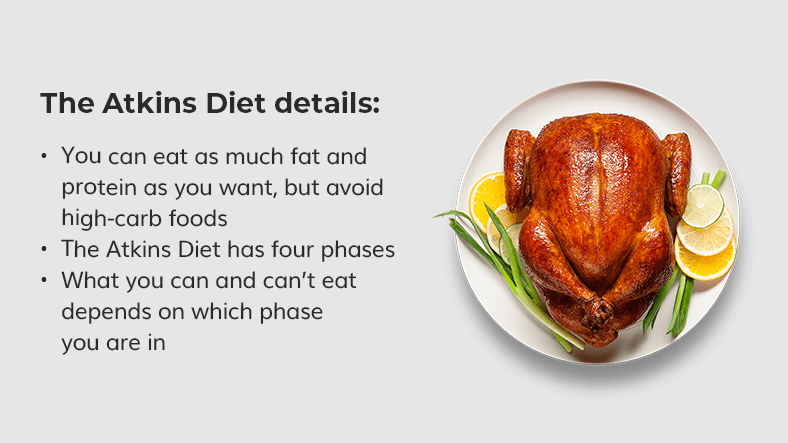
Foods to Eat on the Atkins Diet
What you can eat depends on which phase you are in. However, no matter what, you should focus on eating healthy protein and fat sources, such as:
- Meat
- Seafood
- Eggs
- Full-fat dairy
- Nuts, seeds, and other healthy fats
- Low-carb vegetables, especially salad greens like kale and spinach
If you are in a stage in which you can eat carbs, pick complex carbohydrates that occur in whole grains, fruits, and vegetables. Here are some examples:
- High-fiber vegetables, like spinach, broccoli, and asparagus
- Low-sugar fruit that is also high in fiber, such as berries
- Legumes, beans, and whole grains
People who follow this diet drink water, coffee, and green tea. Alcohol is OK during the later stages in small amounts.
RELATED POST: Is Coffee Good For You And Can It Help With Weight Loss?
Foods to Avoid on the Atkins Diet
People on the Atkins diet should avoid these in all phases:
- Sugary sweets
- Grains, especially processed grains, such as white bread and pasta
- Vegetable oils
- Trans fat
- Low-fat and diet foods
During the first stage, people on the diet should avoid:
- High-carb vegetables, such as carrots
- High-carb fruits, such as bananas and pears
- Starches
- Beans and legumes
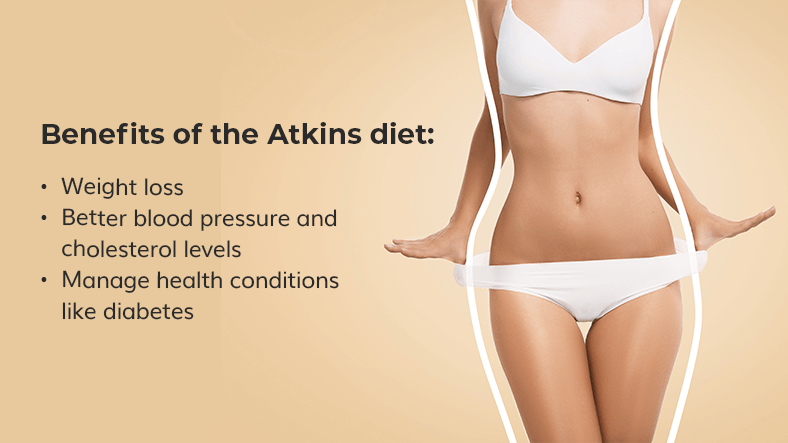
Benefits of the Atkins Diet
In general, people who follow this diet for one year have pretty good results. People who stick with the diet typically:
- Lose more weight like with the Keto diet
- Have better blood pressure and cholesterol levels.
- Better manage their health conditions, including diabetes and metabolic problems.
People on this diet also like that they don’t have to count calories or limit all carbohydrates. They typically appreciate the flexibility that this diet offers. After the first stage, you adjust the diet to suit your body’s response.
The diet also focuses on eating carbs (after you complete the first stage) that are high in fiber. Fiber helps you feel full, improves your digestive system, and helps you manage your weight.
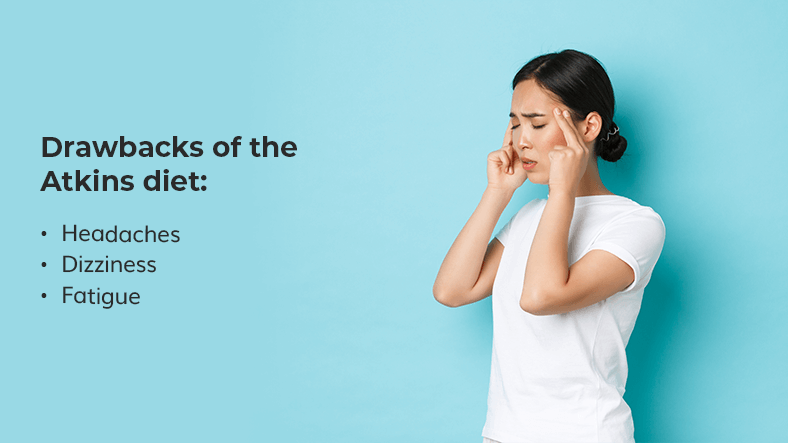
Drawbacks of the Atkins Diet
Some of the negative side effects and risks from this diet include:
- Headaches
- Dizziness
- Bad breath
- Fatigue
- Nausea and constipation
Some medical professionals recommend that you eat two cups of fruit per day. On the Atkins diet, most people will struggle to eat this much fruit, and you might miss some of the vitamins and minerals that fruit contains. Even though later phases of the diet emphasise fiber, you still might not be eating enough, especially at the beginning.
This diet is less restrictive than some low-carb diets, but it is still limiting. Some people find it too restrictive. Even though it doesn’t require calorie counting, you still need to keep track of your carb intake, and some people struggle to cdo that every day.
RELATED POST: Restrictive Diet for Weight Loss – Are They Good for You?
The Paleo Diet
The Paleo diet is all about eating the foods that our ancestors ate thousands of years ago during the Paleolithic era. During this time period, people were hunter-gatherers, not farmers. They typically ate whole foods, including fish, meat, fruits, vegetables, nuts, and seeds.
The purpose of this diet isn’t to avoid carbs. The Paleo diet lets you eat as many fruits and vegetables as you want. However, because people who follow this diet don’t eat grains, dairy, or processed foods, most end up eating low-carb diets by default.
RELATED POST: Are Processed Foods REALLY That Bad For You?

Foods You Can Eat on the Paleo Diet
People who follow the Paleo diet eat whole, unprocessed foods. They eat:
- Meat, including beef, chicken, turkey, and others
- Fish and seafood
- Eggs
- Vegetables
- Fruit
- Potatoes
- Nuts and seeds
- Oils that come from fruits and nuts, including extra virgin olive oil, coconut oil, and avocado oil
- Spices (some people on Paleo eat salt, but others avoid it)
Foods to Avoid on the Paleo Diet
In general, you should avoid processed foods on this diet, including:
- Beans and lentils
- Dairy
- Grains, such as wheat, oats, and barley
- Trans fat
- Refined sugars
- Artificial sweeteners
- Low-fat products
- Alcohol
Some people on the diet will drink tea and coffee, even though hunter-gatherers didn’t have access to these beverages.
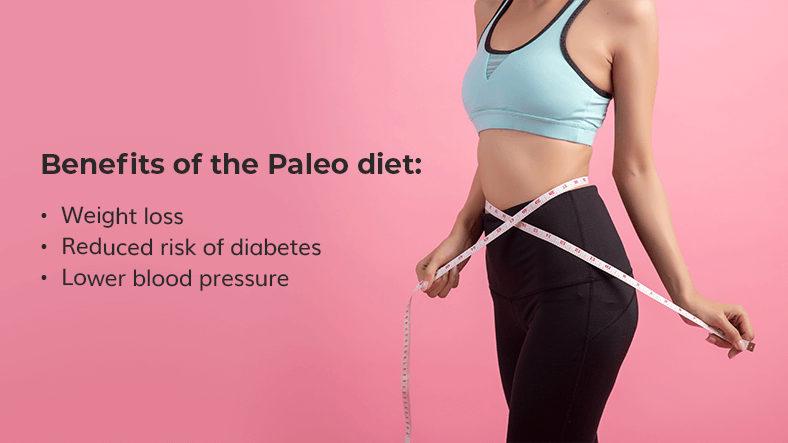
Benefits of the Paleo Diet
On the Paleo diet, you’ll eat significantly less sugar and avoid ultra-processed foods. While some processed foods can be healthy, ultra-processed foods are the ones you should watch out for when eating, since they are more likely to cause health issues.
When eating like this, you’ll eat fewer empty calories. Some of the benefits of this diet include:
- Weight loss
- Reduced risk for diabetes
- Lower blood pressure
Supporters of the diet also claim that Paleo can help with:
- Gout
- Inflammation throughout the body
- Improved heart health
- Osteoporosis
However, more research needs to be done to verify these claims.
RELATED POST: Is the Paleo Diet Good For You?
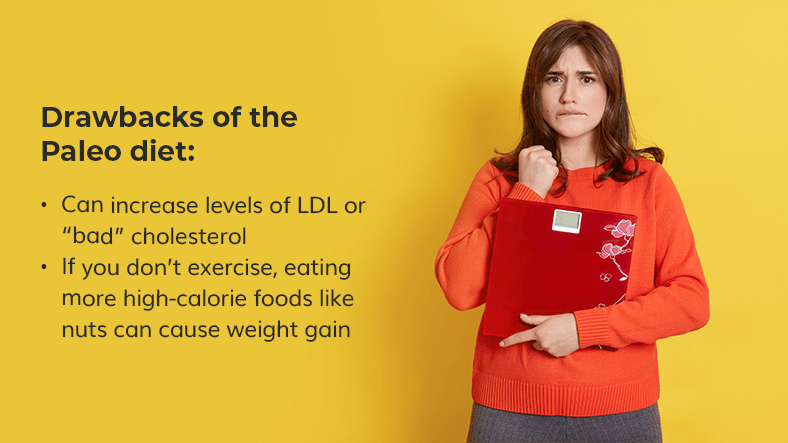
Drawbacks of the Paleo Diet
This diet includes a lot of red meat, and that can increase levels of LDL or “bad” cholesterol. This is associated with an increased risk of heart disease. In addition to this, some people notice that they gain weight when on this diet if they aren’t properly exercising due to all the high-calorie foods (like nuts).
Like other low-carb diets, this diet is restrictive. Some people will struggle to stick with it, and others might slip into binge eating because of that.
RELATED POST: How to Overcome Binge Eating
The Low-Carb Mediterranean Diet
The Mediterranean Diet is based on the cuisines of countries surrounding the Mediterranean Sea, such as Greece and Italy.
The diet is plant-based, not meat-based. Because of this, people still eat plenty of carbohydrates. However, because the diet emphasises eating whole foods, people end up eating fewer sweets and processed foods that are often high in carbs.

Foods to Eat on the Mediterranean Diet
The diet emphasises eating whole foods that have been minimally processed. In general, people on this diet eat:
- Lots of vegetables, fruits, whole grains, and healthy fats (like olive oil) every day
- A moderate amount of fish, poultry, beans, and eggs
- Moderate portions of dairy products
Alcohol isn’t encouraged, but you can drink red wine in moderation.
Foods to Avoid on the Mediterranean Diet
People on this diet should avoid:
- Refined grains
- Added sugar
- Processed or packaged foods, including deli meat
- Trans fats
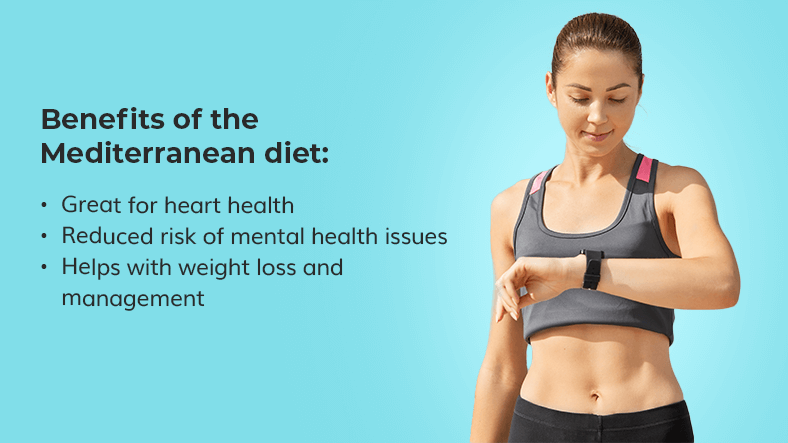
Benefits of the Mediterranean Diet
- Research shows that this diet is excellent for heart health. In fact, the American Heart Association recommends it for preventing heart disease.
- It is associated with a reduced risk of mental health problems.
- The Mediterranean diet helps with weight loss and management.
- It reduces inflammation throughout the body.
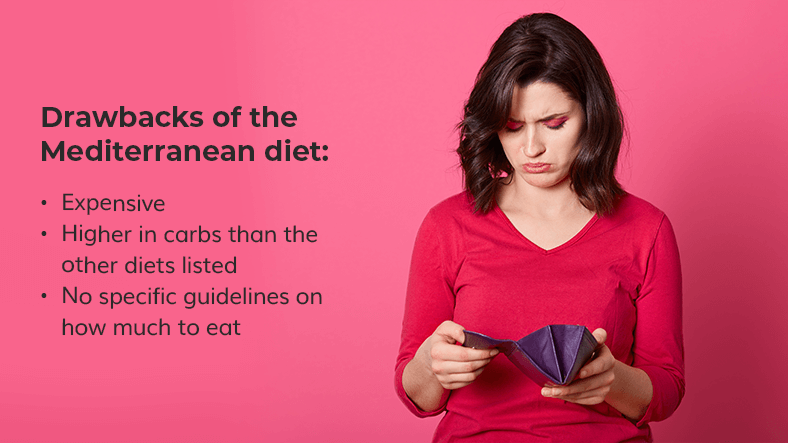
Drawbacks of the Mediterranean Diet
- Some people find the diet to be expensive. Nuts, fish, and olive oil can be pricey!
- This diet is higher in carbs than the other diets listed. Because of this, people with specific dietary needs might not like this diet.
- It doesn’t provide specific guidelines about how much to eat. Some people like the structure of counting calories or carbs.
A Typical Low Carb Diet
Even though all of these diets are different, they share some basic principles. Luckily, you don’t have to follow any of these diets if you don’t want to. If you want to lower how many carbs you eat, you can start with the basics:
- Limit your sugar intake. Avoid added sugars and refined grains.
- Skip trans fats.
- Don’t eat ultra-processed foods or low-fat diet items.
- When you eat carbs, pick vegetables, fruit, and whole grains that contain fiber.
- Pick lean meats, fish, healthy oils, and nuts and seeds.
I typically suggest that you try to eat about 25-30 percent of your calories as carbohydrates, even on low-carb diets. However, always listen to the advice of a medical professional, especially if you are managing a health condition.
If you want to follow a specific diet, consider which one will work best for you. Some people prefer structured and restrictive diets, but others struggle with them. It all depends on your lifestyle, fitness goals, health history, and general preferences. :)
Love Rachael Xx


